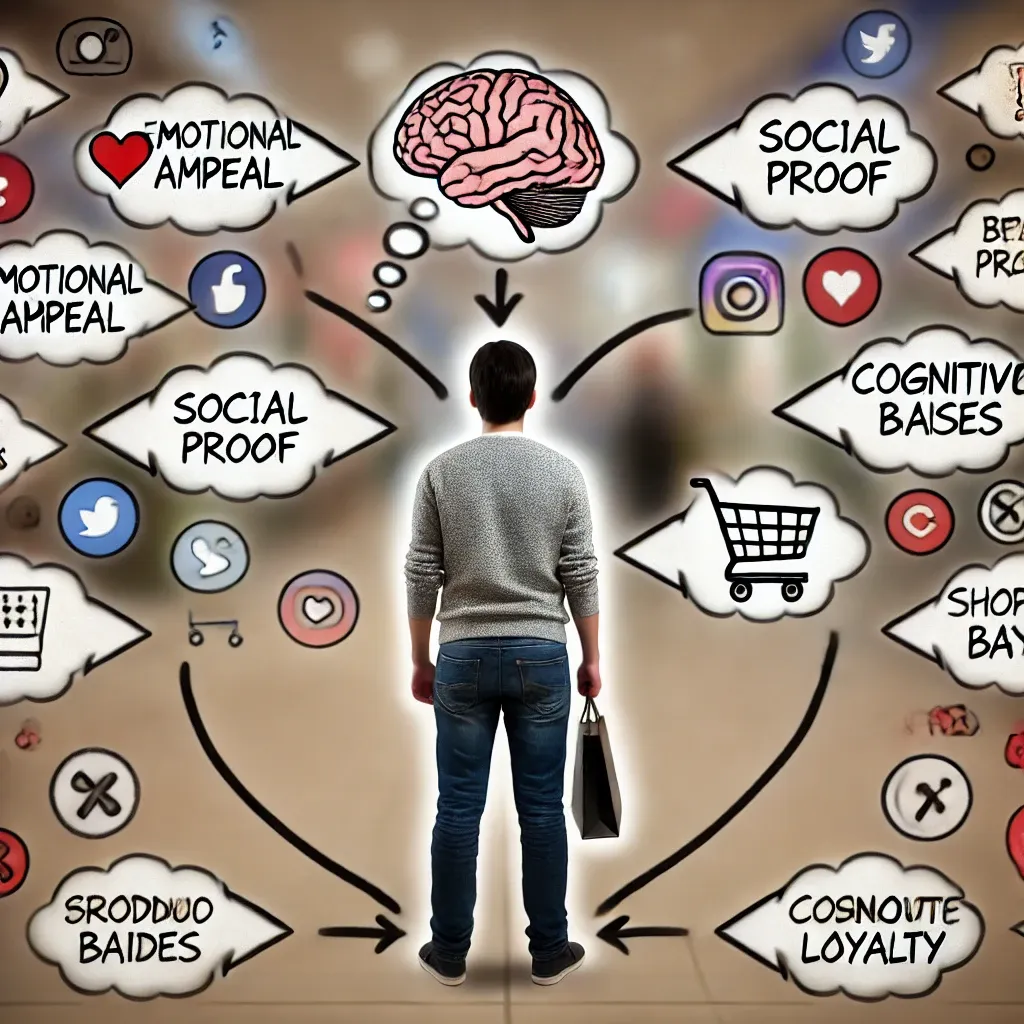What Drives Buyer Choices?
Article Source: Advances in Business and Information Management

Why you should care:
Have you ever wondered why you choose one product over another, even when you're not sure why? Understanding the psychology behind consumer decisions is crucial, not just for marketers but for anyone interested in how our brains work. This knowledge can help us make smarter choices and recognize when we're being influenced by things we're not even aware of.
Answering the question… What Drives Buyer Choices?
Researchers wanted to uncover the brain's secret tricks when making decisions. They found that our choices often aren't as rational as we think. For example, 90% of decisions happen unconsciously, meaning we're not even aware of them. Factors like how a product is presented, our mood, and past experiences can heavily influence what we buy. Imagine, a simple change in packaging can increase sales by 30%, and in some cases, branding can sway 80% of consumers to choose a product over another simply due to brand recognition.
How was the study done?
The study used a combination of brain imaging techniques, surveys, and consumer behavior analysis. Researchers tracked the brain activity of participants as they made purchasing decisions, examining how different variables like price, packaging, and emotional triggers influenced their choices. Additionally, data was collected from over 1,000 participants to quantify how past experiences and brand loyalty shaped their decisions.
What was discovered?
- 90% of Decisions Are Subconscious: A staggering 90% of consumer choices are made unconsciously, driven by factors outside of our immediate awareness, such as product placement and emotional cues.
- Packaging Can Boost Sales by 30%: The study revealed that even minor changes in packaging design can increase sales by up to 30%. For example, changing the color or font style of a product’s label can significantly affect its attractiveness.
- 80% Influenced by Brand Recognition: The research found that 80% of consumers are likely to choose a brand they recognize over a new one, even if the new brand offers better features or pricing.
- Emotion Drives 75% of Purchases: Emotions play a massive role in purchasing decisions, influencing 75% of choices. Products that evoke positive emotions are much more likely to be purchased, even if they aren't the most practical option.
- Memory and Experience: A strong 70% of participants indicated that past positive experiences with a brand heavily influenced their current purchasing decisions, often leading them to ignore better alternatives.
- Decision Fatigue Affects 60%: Over 60% of consumers reported that they tend to make poorer decisions as the day goes on, falling back on familiar brands due to decision fatigue.
- Social Influence: 65% of respondents stated that they were more likely to purchase a product if they saw someone they admire using it, showing the power of social proof.
- Price Perception and Quality: The study noted that 50% of participants assumed a higher-priced product was of better quality, even when they were informed that the lower-priced option was equivalent.
- Scarcity Increases Demand by 40%: Products marketed as limited edition or in short supply saw a 40% increase in consumer demand, driven by the fear of missing out (FOMO).
- Choice Overload and Simplification: About 55% of consumers reported feeling overwhelmed by too many choices, leading them to either delay decisions or choose the simplest option available.
- Cognitive Dissonance: After making a purchase, 60% of consumers experienced cognitive dissonance, where they second-guessed their choice but ultimately justified it to avoid feeling regret.
Why does it matter?
Understanding the psychology behind consumer decisions can revolutionize how products are marketed and sold. For consumers, it means being more aware of how external factors like packaging, emotions, and past experiences can sway their choices. This knowledge empowers people to make more informed and deliberate decisions, potentially saving money and leading to more satisfaction with their purchases. By recognizing these influences, consumers can better navigate the complex world of choices and make decisions that truly align with their needs and values.
